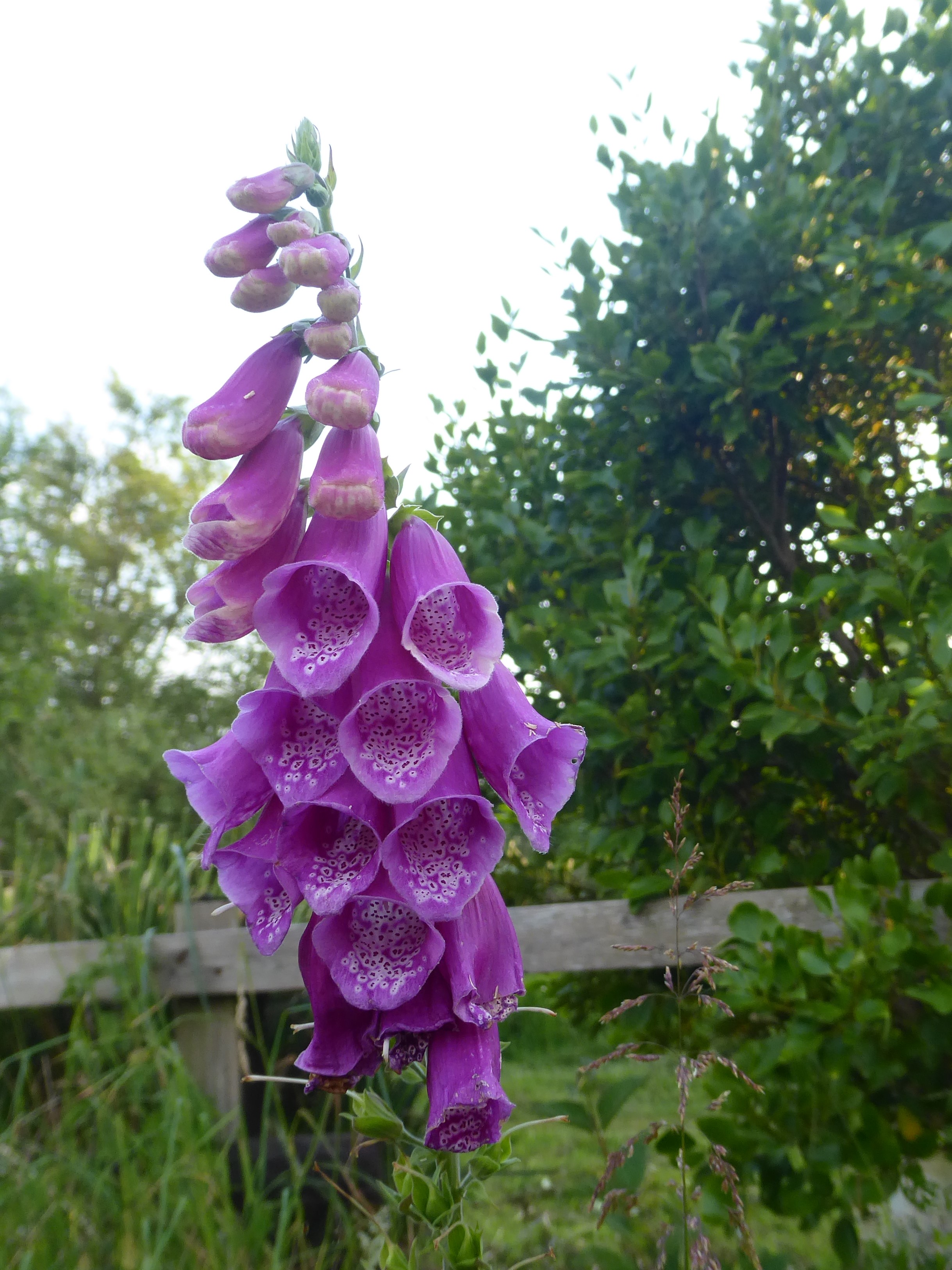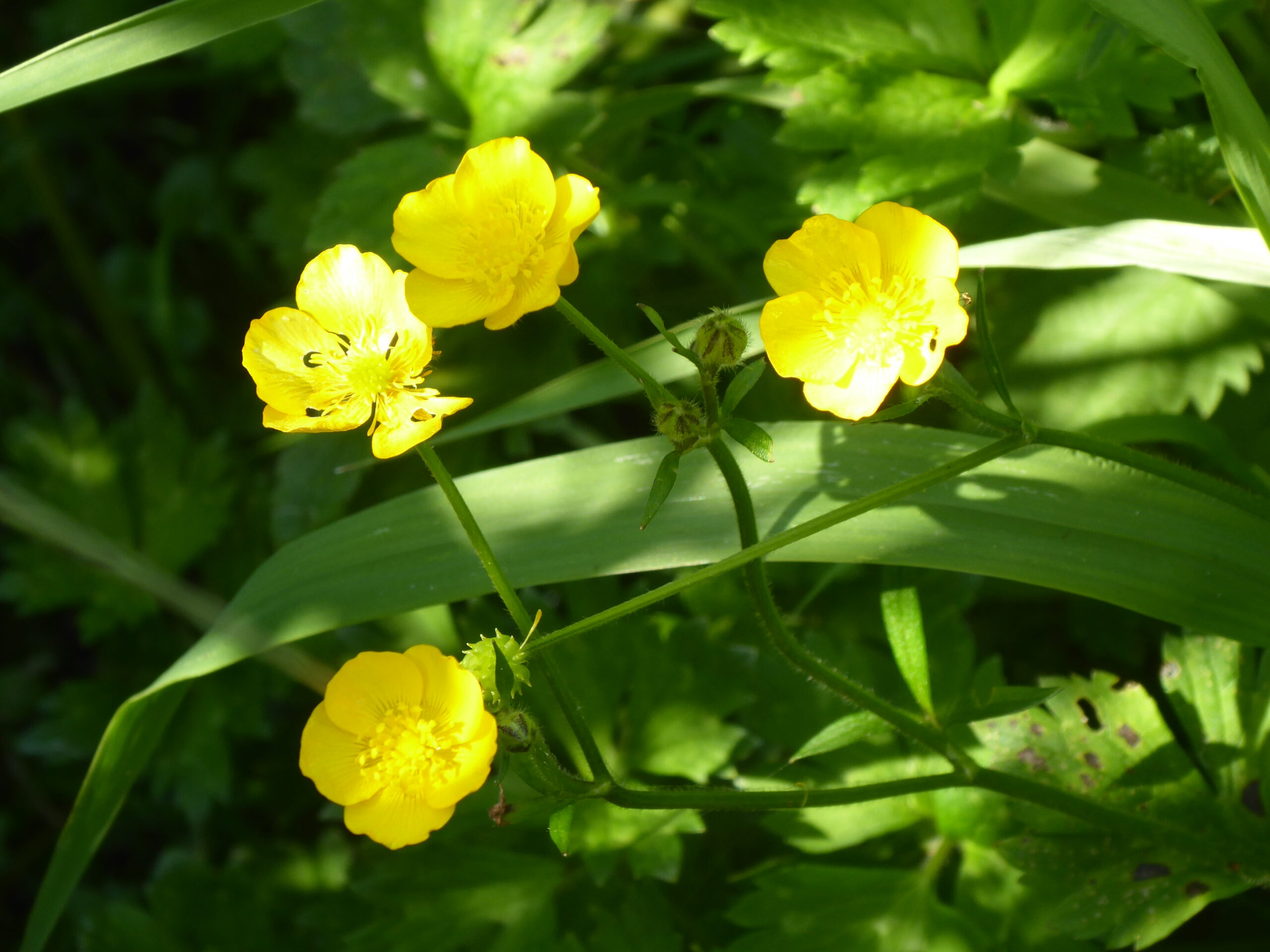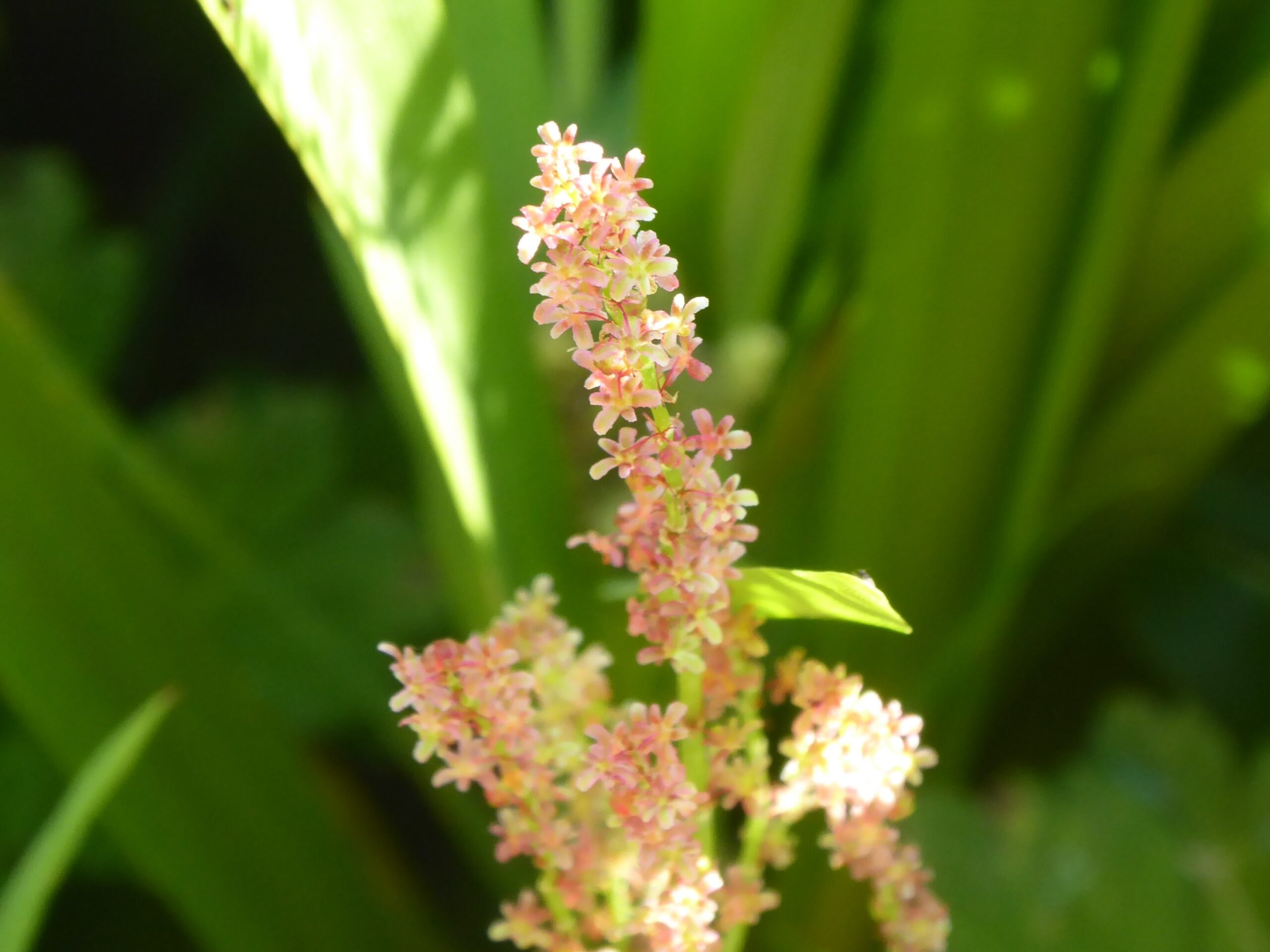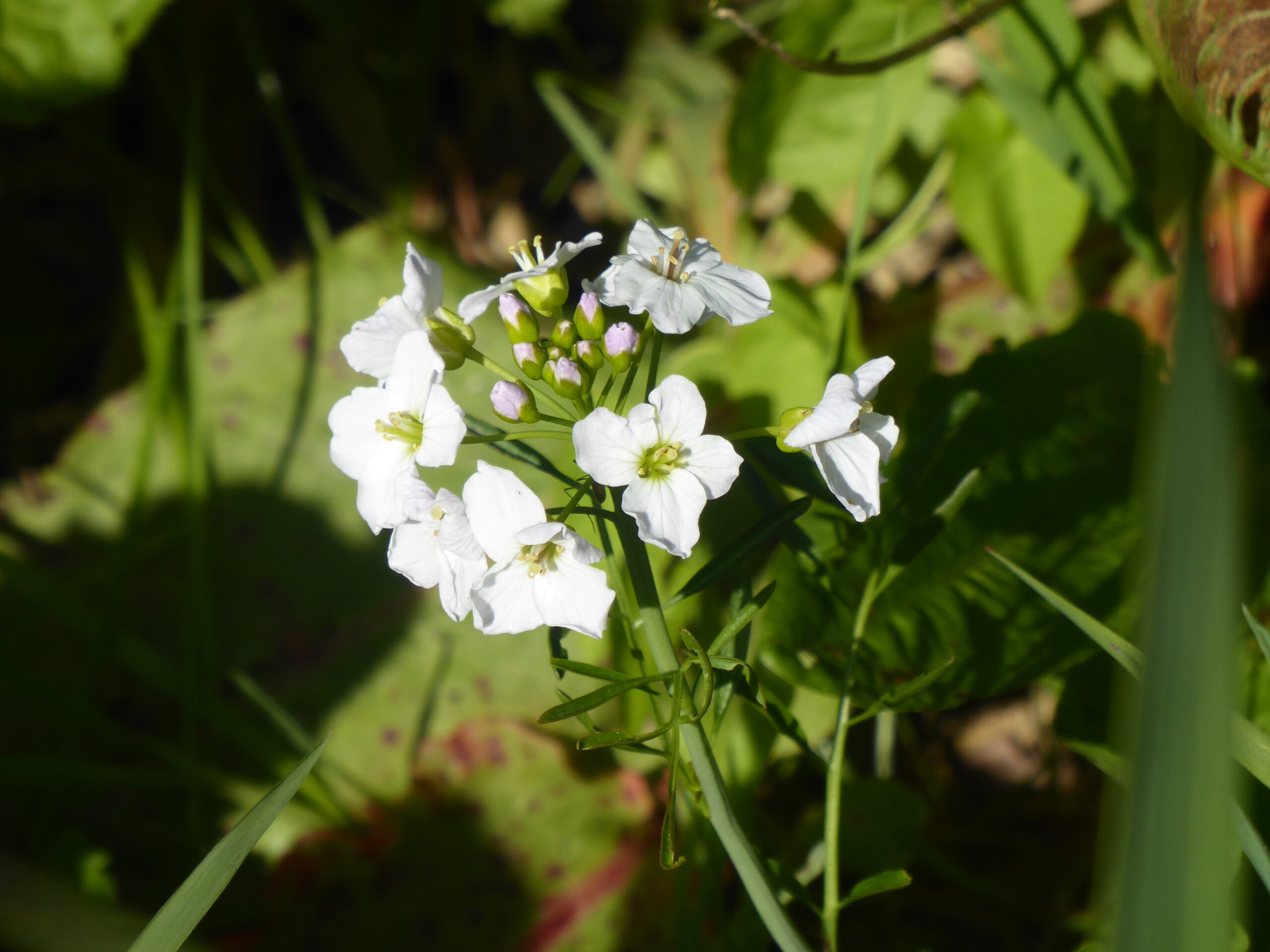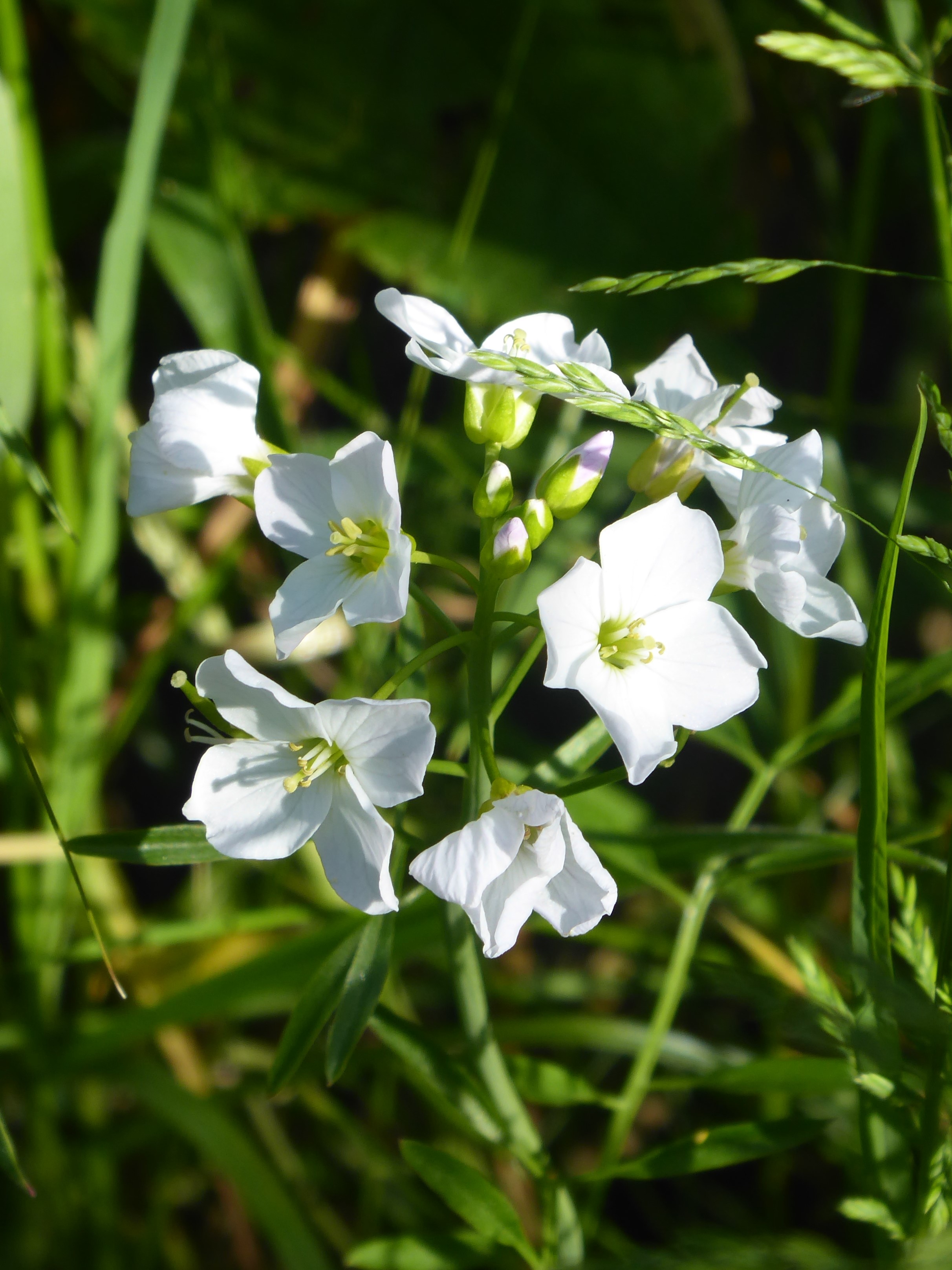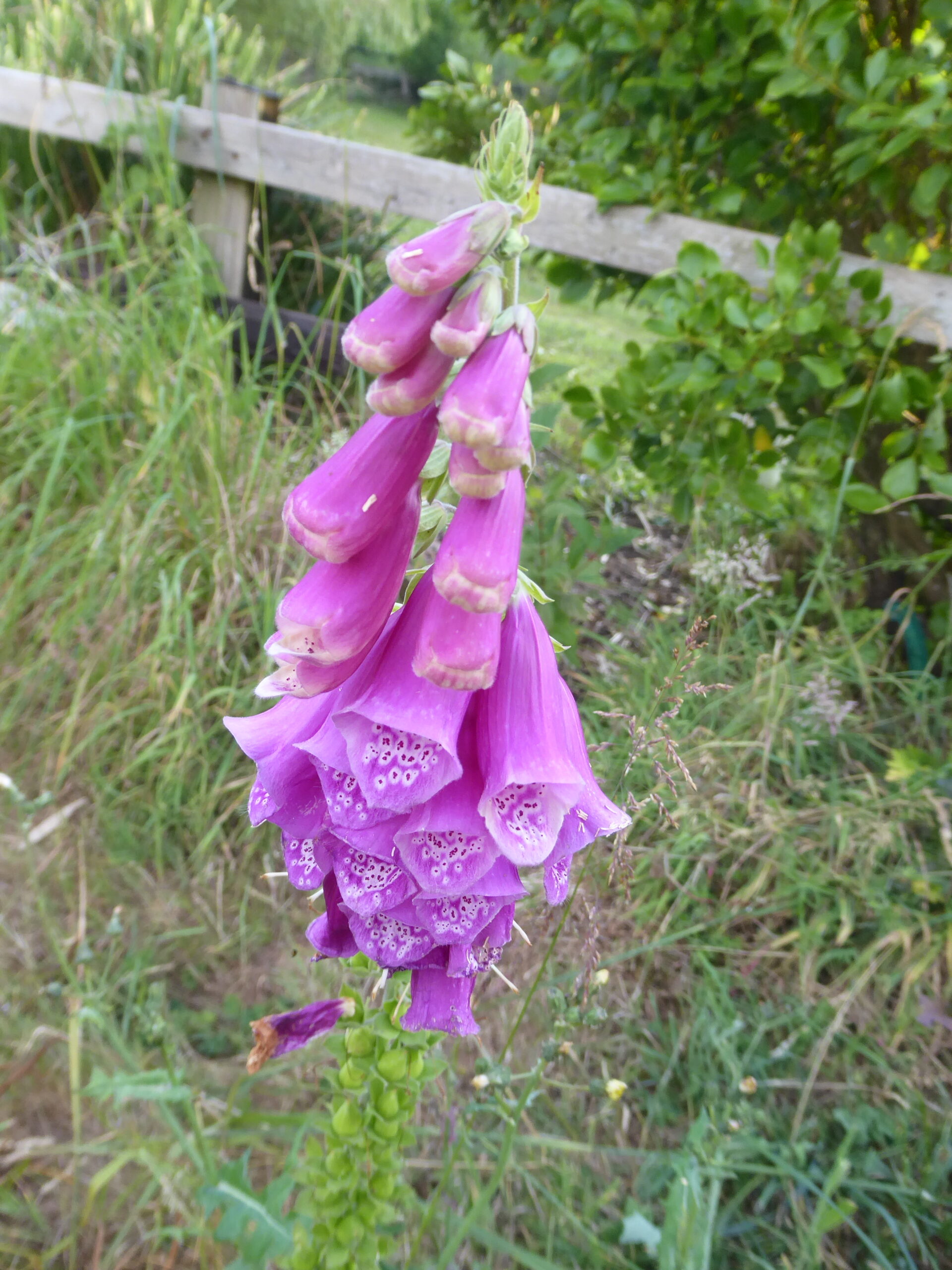
We had rain yesterday evening, very welcome. The pendulous Sedge flowers now stiff and dry, the undispersed pollen stuck together. I wandered round with my camera trying to capture the house Martins and swifts in flight. The reedbed was alive with birdsong, but it was impossible to pick any out, let alone identify them.
The cleavers are in flower. Delicate white blooms, not unlike the Cuckoo Flower, almost sparkling in the undergrowth. It might have been my imagination but this annoying velcro plant seems to be less ‘sticky’. Perhaps, it’s a phase it goes through.
Finally, I had to get a photo of the foxglove. There are only two in the watermeadow and one has fallen over, so it was my last chance.
